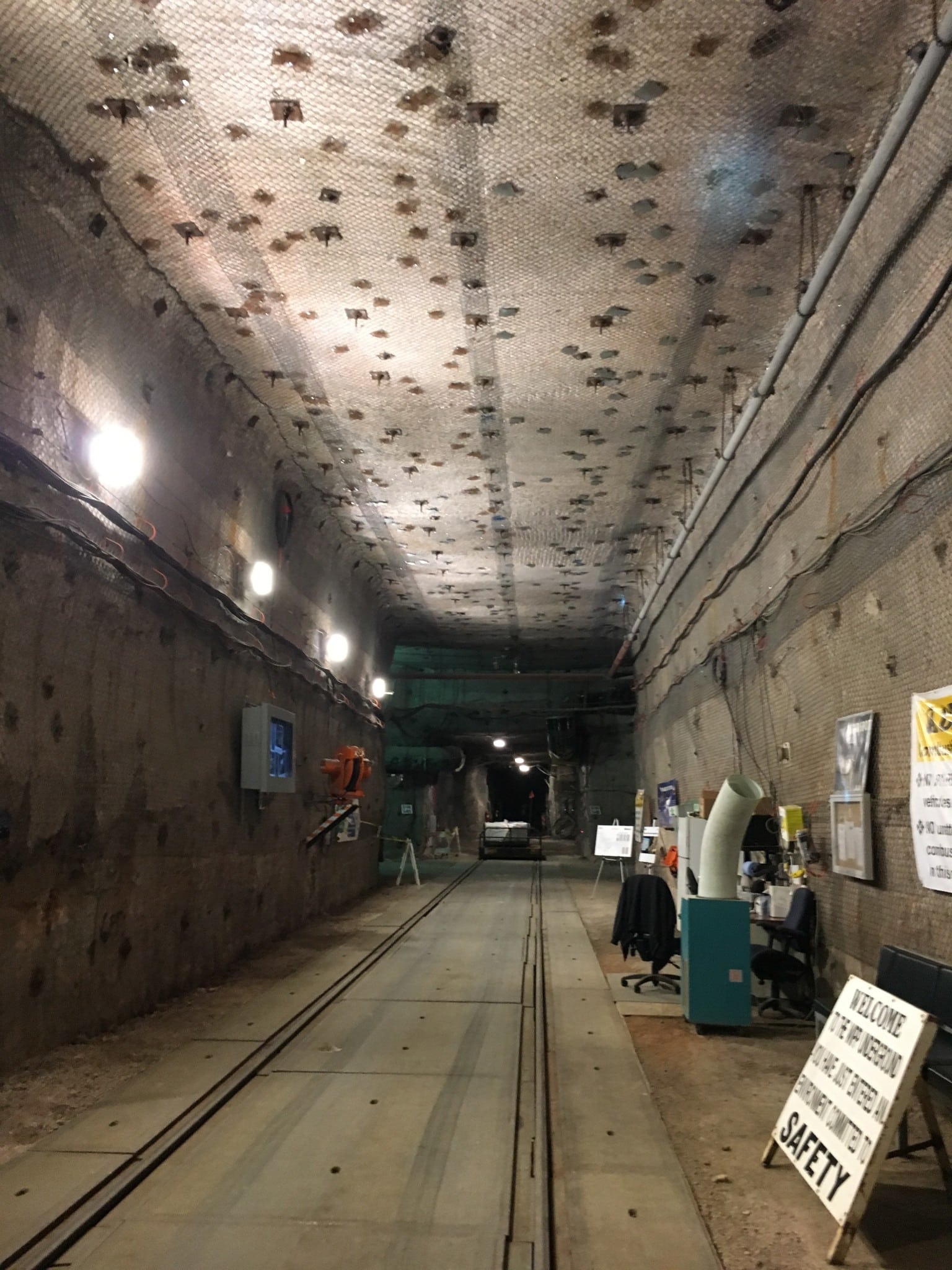
At some point in the future, the Energy Department will have to crank shipments of radioactively contaminated material to the Waste Isolation Pilot Plant (WIPP) into overdrive to meet an internal projection of roughly 20 shipments a week over the mine’s 35-year operational life.
In the 35 years running through 2034, DOE thinks the New Mexico storage facility will receive 37,723 shipments of transuranic waste, or an average of just over 20 shipments each week, according to an agency estimate.
While the projection is two decades old, DOE cited it as recently as December in the Supplement Analysis for the Waste Isolation Pilot Plant Site-Wide Operations the agency published as a precursor to reopening the mine after its well-publicized three-year hiatus. The estimate comes from a supplemental environmental impact statement DOE published in 1997.
To hit 20 shipments a week, DOE and WIPP prime contractor Nuclear Waste Partnership (NWP) will have to substantially ramp up the site’s throughput, above even the past peak shipment rate of 17 a week in the short-sample-size 2014. That year, the mine operated fewer than two months before a radiation leak and unrelated fire shut it down for almost three years.
Waste shipments to WIPP from off-site are set to resume in April at a rate of only five a week through at least January 2018, DOE and NWP announced on Feb. 14. Cleared for shipment were: the Idaho Site, the Oak Ridge Site in Tennessee, the Savannah River Site in South Carolina, the Los Alamos site in New Mexico, and the privately operated Waste Control Specialists storage facility in Texas. DOE has not said which site will go first, though the Idaho Site has the largest backlog of transuranic waste of any facility in the complex.
DOE hit an average WIPP shipment rate of 15 a week in 2013, the last full year in which the mine operated as intended. In December’s supplemental analysis, the agency acknowledged “[s]hipping rates for the next five years have not been formally established. However, the shipping rates will be lower than the 2013 shipping rate.”
DOE did not reply to a request for comment this week.
The agency’s plan for ramping up shipping rates hinges on a sequence of increasingly expansive construction projects at WIPP — a combination of underground ventilation improvements and more waste-storage space — that will not all be completed until early next decade.
That means the fight to fund the projects will be part of DOE’s early budget challenges as the new administration of President Donald Trump crafts its first federal spending request. Last year, WIPP boosters in Congress had to remind their colleagues that a $70-million settlement DOE reached with New Mexico over the 2014 accidents had to be appropriated in addition to, not as a part of, the facility’s roughly $300-million annual operating budget.
The now-departed Barack Obama administration wrote that request into its final federal budget proposal, and DOE cleanup stewards now must make the case that the Trump administration — which recently swore in would-be budget slasher Mick Mulvaney as director of the White House Office of Management and Budget — should follow suit.
The administration’s first budget request should be unveiled in mid-March, President Trump told reporters at the White House Wednesday, according to an official transcript of his remarks.
The first throughput improvement planned at WIPP is a supplemental ventilation system expected to come online June 30 and improve underground airflow to more than 180,000 cubic feet per minute from the current 110,000 cubic feet per minute. That would increase the number of workers who could be underground at any given time.
Still, the supplemental system would not allow DOE to both inter waste while simultaneously conducting mine maintenance or mining out new waste disposal areas.
So in 2019, DOE plans to break ground on a dedicated above-ground waste storage building at WIPP. Waste could stay in the new building for as long as a year, meaning DOE will have somewhere to put waste shipments if the material arrives while workers are doing underground maintenance. Last year, the agency sought and received permission to build this new waste way-station as part of its settlement with New Mexico. However, the project is not yet funded.
Ultimately, DOE and NWP need the capacity to inter waste and fix the mine at the same time if they mean to reach or exceed WIPP’s historical peak shipment rate.
That means embarking on a construction project NWP estimates will cost between $270 million and $400 million to install a permanent ventilation system that will increase underground airflow to about 420,000 cubic feet a minute. The last of the big capital improvements DOE and NWP plan to restore WIPP to pre-accident efficiency or better, the permanent ventilation system is still mostly on the drawing board and not expected to be complete until the early 2020s.
Nuclear Waste Partnership has started drilling some exploratory boreholes where the permanent ventilation system’s new air shaft could go, but further work is not yet funded. The contractor and its customer could have news on that front at the next quarterly WIPP townhall meeting, on the slate for 7:30 p.m. Eastern time on March 16 in Carlsbad, N.M. The meeting will also stream online.